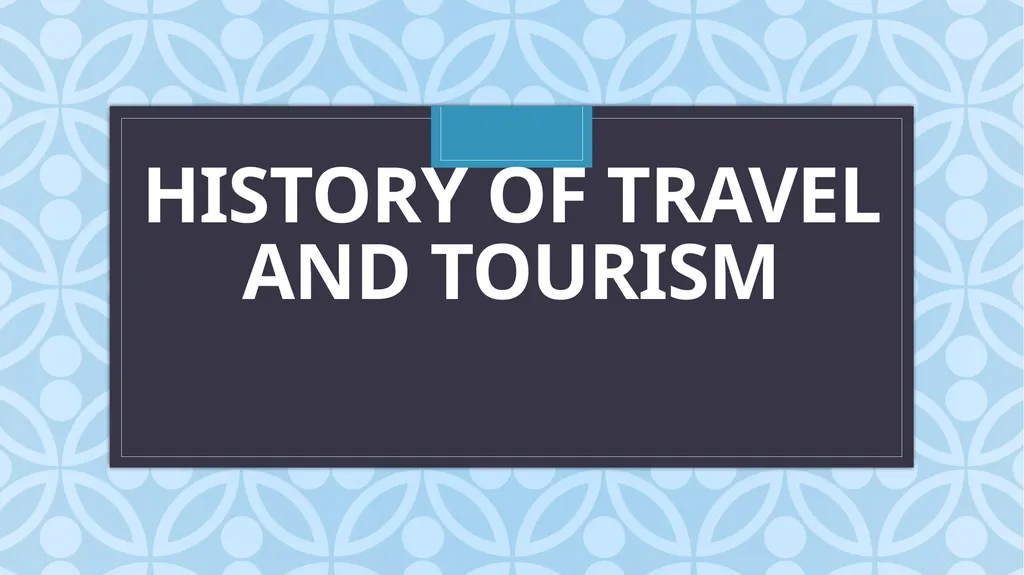History of Travel and Tourism What has influenced
Author : tatyana-admore | Published Date : 2025-05-19
Description: History of Travel and Tourism What has influenced its development What do you think over the centuries has led to the development of travel and tourism Think about developments over the centuries which have encouraged people to move
Presentation Embed Code
Download Presentation
Download
Presentation The PPT/PDF document
"History of Travel and Tourism What has influenced" is the property of its rightful owner.
Permission is granted to download and print the materials on this website for personal, non-commercial use only,
and to display it on your personal computer provided you do not modify the materials and that you retain all
copyright notices contained in the materials. By downloading content from our website, you accept the terms of
this agreement.
Transcript:History of Travel and Tourism What has influenced:
History of Travel and Tourism What has influenced it’s development? What do you think, over the centuries, has led to the development of travel and tourism? Think about developments over the centuries which have encouraged people to move around, and the reasons for their travel. About five thousand year ago, changes in climate, dwindling food and shelter conditions hostile invaders made the people leave their homes to seek refuge elsewhere like the Aryans left their homes in Central Asia due to climate changes. Early travellers migrated for food and hunting. During Hindu and Chinese civilization a movement of religion, education and culture began. Christian missionaries, Buddhist monks and other travelled far and wide carrying religious messages and returned with fantastic images and opinions about alien people. The Roman Empire saw travel along the Nile, road system development and roadside inns as people travelled for business, pleasure and education. The Middle Ages (5th – 14th centuries) and the Renaissance Era (14th – 16th centuries) saw transportation and safety decline, less acceptance of currencies, travel by crusaders to the Holy land, Marco Polo’s travels in the late 13th C, and an increased interest in travel for commerce and pleasure For centuries movement of people continued to grow due to the efficiency of transport and the assistance and safety which the people could travel. By the end of the 15th century, Italy had become the intellectual and cultural centre of Europe. It represented the classical heritage both for the intelligentsia and the aristocracy. During the 16th Century, travel came to be considered as an essential part of the education of every young Englishman. Travel thus became a mean of self – development, and education in its broadest sense. The educational travel was known as ‘Grand Tour‘ and was seen as a status symbol which often lasted years. The industrial revolution brought about significant changes in the pattern and structure of British society. Thus, the economy of Britain was greatly responsible for the beginning of modern tourism. It also created a large and prosperous middle class and because of great improvement in transportation systems in latter half of the 18th century and the first quarter of the 19th century, an increasing number of people began to travel for pleasure. However, the developments of rails, roads, steamships, automobiles, and airplanes helped to spread technology across the globe. Earlier travel was a privilege only for wealthy














